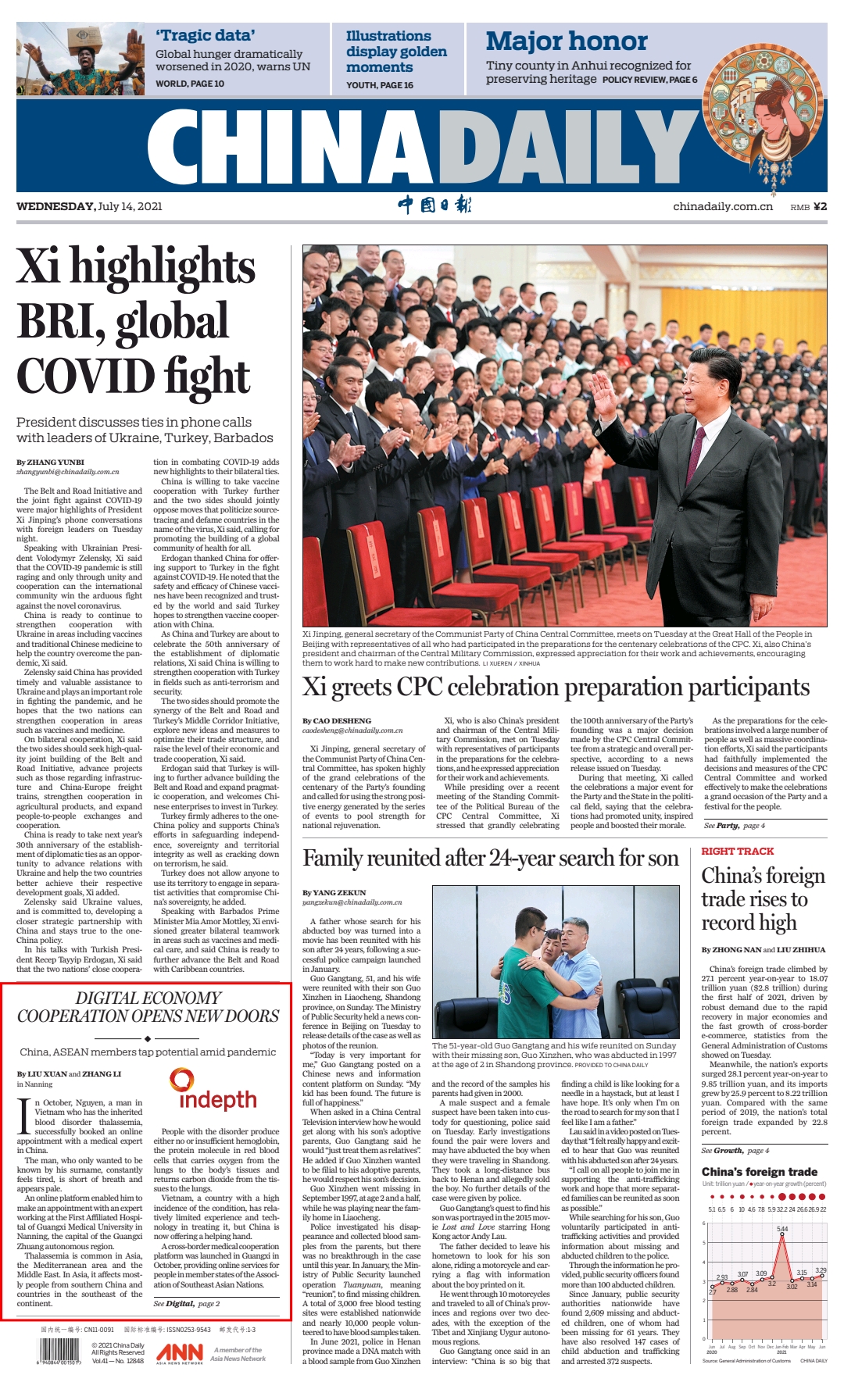Time:2021-08-01


Through an online platform, Mr Nguyen, a thalassemia patient in Vietnam with only surname available, successfully made an appointment with a Chinese expert at the First Affiliated Hospital of Guangxi Medical University last October.
Suffered from this inherited blood condition, Nguyen always feels tired and short of breath and looks pale.
The disease is the most common one in Asia, the Mediterranean basin, and the Middle East. In Asia, the disease affects people most from Southern China, Southeast Asian countries.
People with thalassaemia produce either no or too little haemoglobin, which is used by red blood cells to carry oxygen around the body.
As a country with a high incidence of this disease, Vietnam has relatively limited experience and technology in treating this disease. But its neighbor could lend a hand.
Last October, a cross-border medical cooperation platform was officially launched in China’s Guangxi Zhuang autonomous region, providing people who have high-quality health needs in ASEAN countries with online services.
It was co-developed by First Affiliated Hospital of Guangxi Medical University, tech company Microsoft, Mindray Bio-Medical Electronics Co and China UnionPay.
Through information technology, such as artificial intelligence, the one-stop medical and health management services would cover every process before, during and after patient being admitted to the hospital.
Once entering the platform through a mobile application, patients from ASEAN countries can register and have remote medical communication with experts from the Guangxi hospital. If necessary, the patients can also apply for cross-border medical transports, allowing them to come to China for further treatment.
Moreover, this digital platform has ten different languages for patients to choose from, including all that spoken in ASEAN countries, and will have more options in the future.
The cooperation with China UnionPay allows the patients to pay for the bill in local currency, saving the trouble of currency exchange.
Although Nguyen from Vietnam would not be able to make an appointment for a transportation to Guangxi, he still could have his diagnosis from the Chinese experts and receive treatment in a local partner hospital.
Based on the common disease spectrum between the two sides, cooperation in the health field has always been an important part of China-ASEAN relations, said Chen Junqiang, president of the First Affiliated Hospital of Guangxi Medical University.
“The incidence of some diseases, such as thalassemia, in Southeast Asian countries is about the same as ours, but our overall treatment level is higher than them,” he said, who has visited those countries for many times to conduct field research.
With the help of the remote collaborative cloud service of this platform, Chen said the hospital can cooperate with those in ASEAN countries in a more specific and in-depth manner.
“Such cooperation can also provide partners with cross-border functions including remote consultation, patient referral and learning exchanges, so that we can realize the seamless information sharing and patient integrated services among hospitals.”
Meanwhile, the Guangxi hospital is also working on establishing a network where all the partner hospitals could share necessary information and accurate description for better treatment.
Patients can go to any designated hospital in this medical ecosystem. After diagnosis, the local doctor will conduct consultation with doctors in Guangxi through the telemedicine platform.
“When we conduct cross-border medical diagnosis, doctor’s description of the disease is much more accurate than the description of the patient or family member,” the president said.
In the future, this cross-border platform will use cloud technology, setting up Internet-based plus pathological diagnosis centers, imaging diagnosis centers, ICU monitoring centers, Chen said.
Such digital cooperation came at a time when China and ASEAN were ready to further tap the potential of digital economy cooperation, especially amid the pandemic.
The digital economy could improve the quality of people’s lives, as well as empower economic and social development, said Miao Wei, then minister of industry and information technology.
From digital infrastructure that could ensure the timely supply of medical supplies, to digital technology that could make diagnosis faster and more accurate, digital applications have been satisfying people’s increasing demand, he said.
During the fight against the Covid-19 last year, through online conferences, the hospital organized seven international online conferences, sharing its experience of pandemic prevention and control with ASEAN countries and others, said the president of the Guangxi hospital.
It also produced English version videos of the operation manuals on throat swab nucleic acid testing and protection of the medical workers, and shared with hospitals in ASEAN countries.
“Medical needs are the common needs of people all over the world,” he said. “The friendship between the nations lies in the closeness of the people, and the closeness of the people lies in the communication of hearts.”
 返回顶部
返回顶部